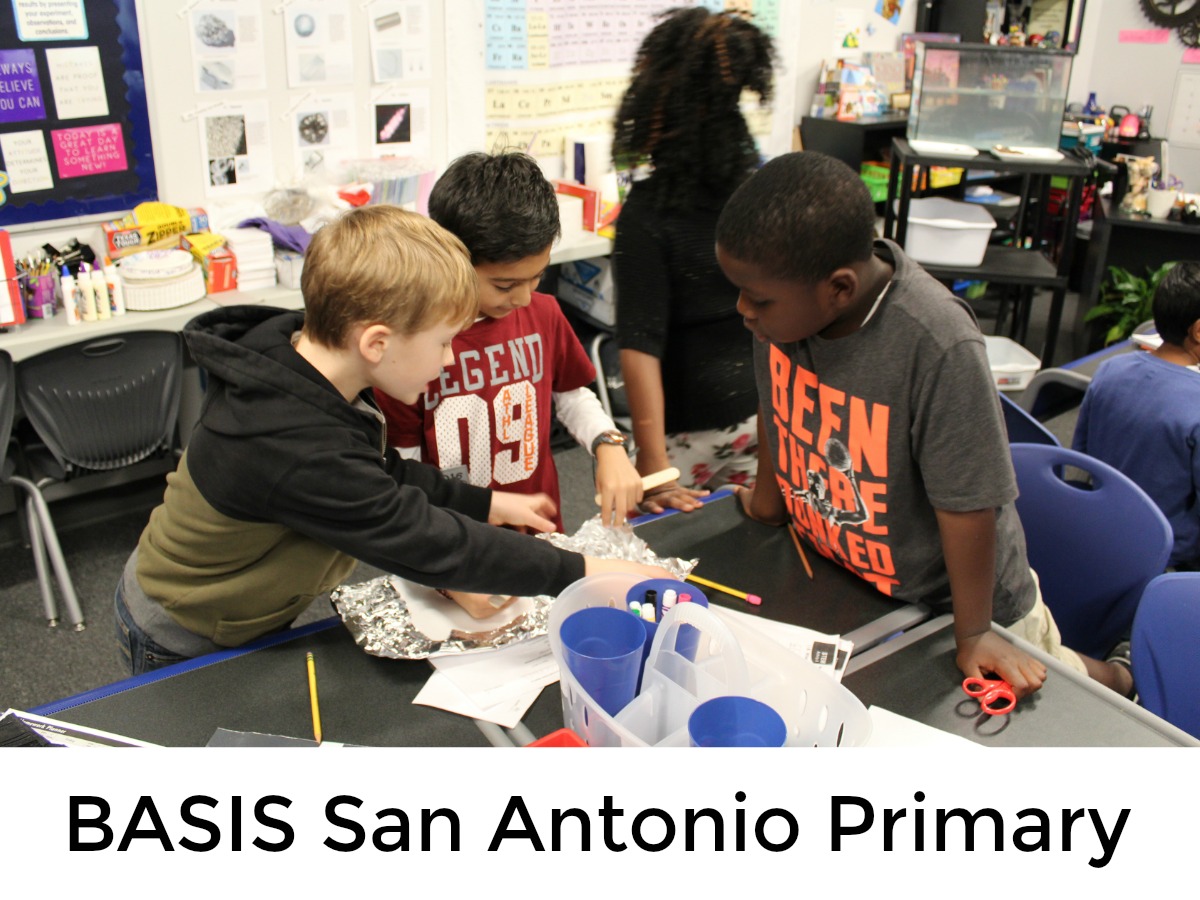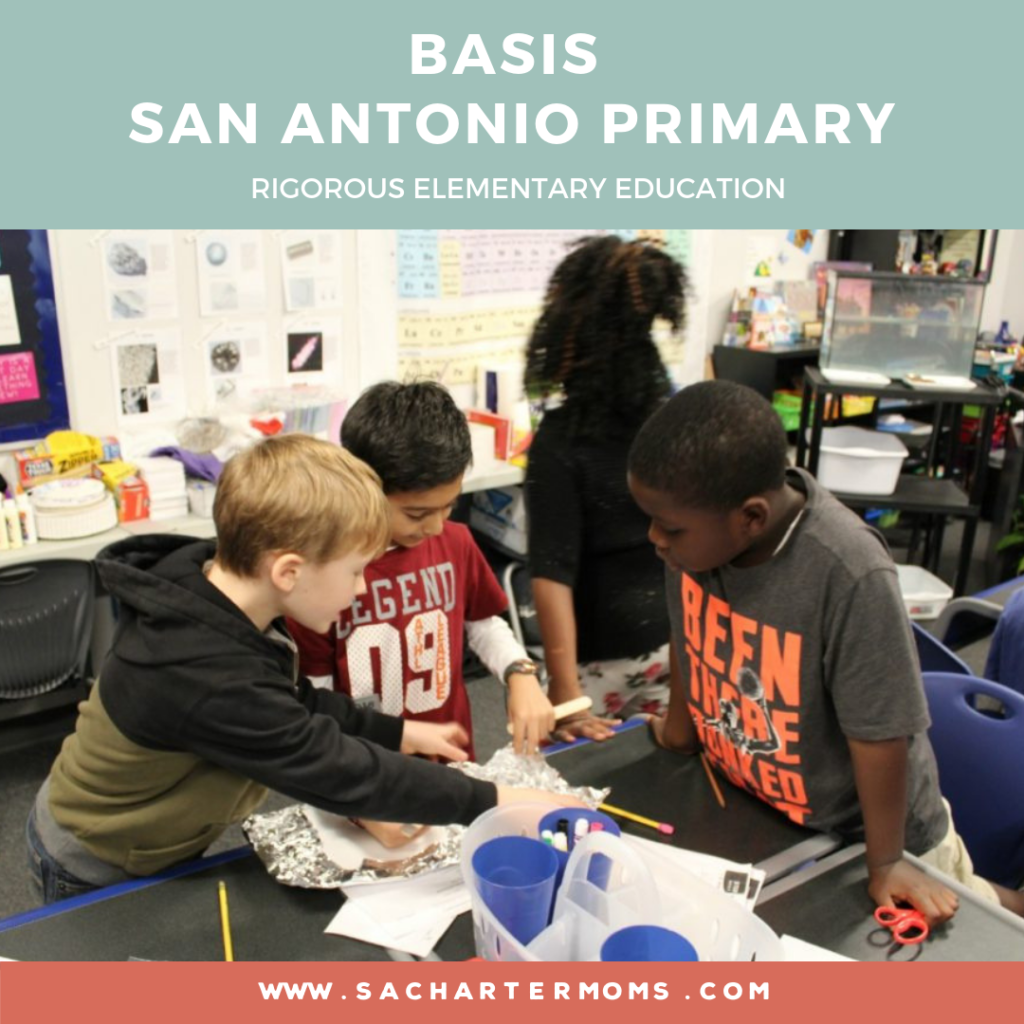
BASIS San Antonio Primary is a public charter school offering high quality, rigorous education for grades K–5 at two campuses, BASIS North Central and BASIS Medical Center. The best chance for parents to enroll their children for the 2018-19 school year is during open enrollment, which is happening now and closes on December 15, 2017. I recently toured BASIS San Antonio Primary North Central Campus with David Hubalik, Associate Vice President of Charter Schools for BASIS.ed, and visited with Interim Head of School America Palmer and Head of Operations Andrew Freeman. Here are my impressions of BASIS San Antonio Primary as a guide to parents who are considering enrolling their children.
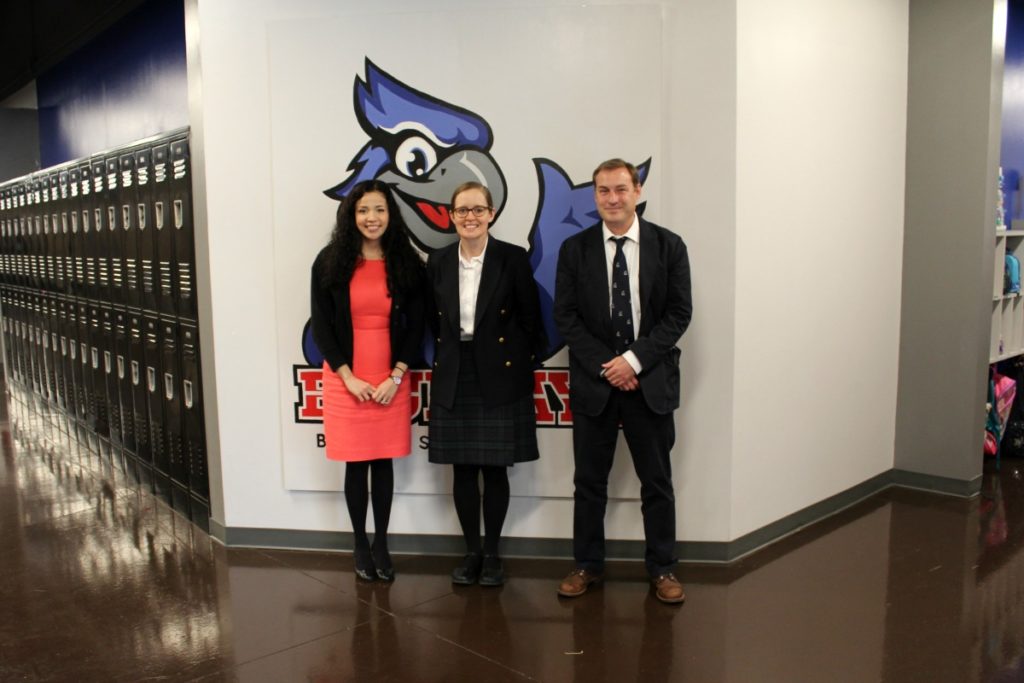
BASIS Primary School Model
As a public charter school, BASIS offers an education model that is strikingly different from the traditional public schools and private schools in the area. The results from established BASIS campuses (including the San Antonio-area middle schools) rank among the best schools in the country. The school model helps teachers do their best work by specializing, and the teachers are there to help the students meet the school’s high expectations.

For students to succeed at BASIS, they need to embrace the model and be willing to work hard. Academically, BASIS offers a liberal arts education with high standards at every level. All students are doing honors-level, pre-AP work. All students participate in the same coursework, and there are no concessions to the expectations. As public schools, BASIS schools are open to students from all backgrounds and all parts of the city.
BASIS expects high output from students, so the school has to work harder to help the students meet those expectations. As Hubalik put it, the school model is designed to “eliminate the noise” that prevents education from taking place.
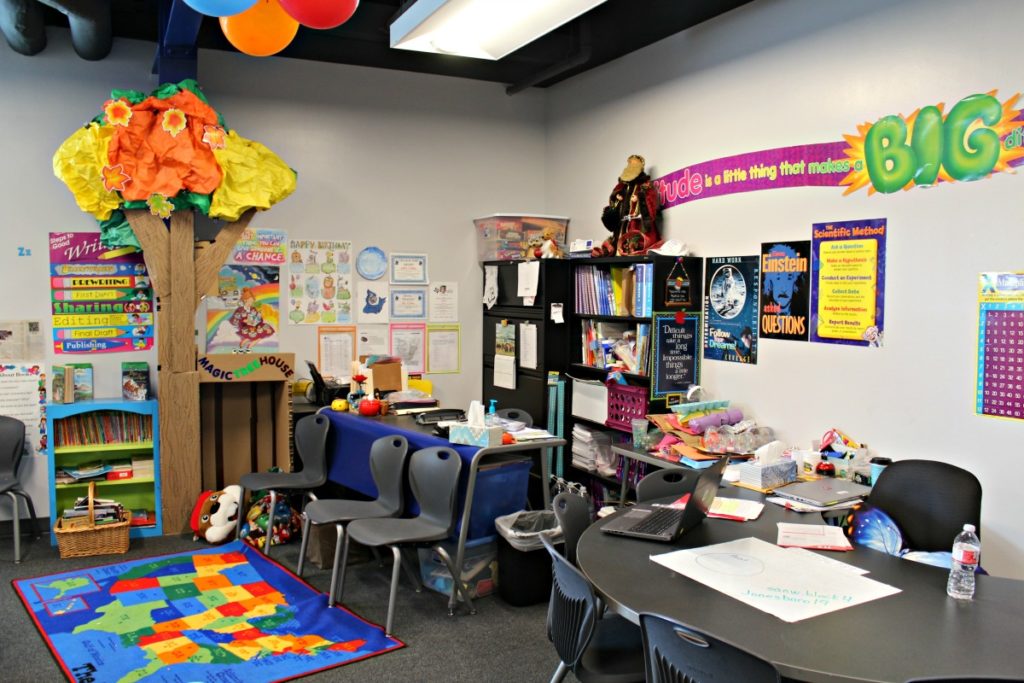
BASIS Primary relies on a two-teacher model, which pairs up learning experts and subject matter experts in each classroom. “There are efficiencies within the system to make instruction better,” said Hubalik. A learning expert teacher stays with the same group of students throughout the day. They are skilled in classroom management and take the time to learn each student’s strengths and weaknesses, offering interventions when needed.
The class moves as a group to interact with subject matter expert teachers who have deep knowledge and passion for their material. A teacher who specializes in Mandarin, for example, will prepare the day’s lesson on that subject and share it with all the sections of that grade level that day. By specializing on the topics they are passionate about, they have prepared more effective lessons and have greater job satisfaction. “In primary education, teacher burnout is a danger,” said Hubalik. “Our solution is to coach teachers and let them specialize so they don’t burn out.”
The two-teacher model also leads to productive collaboration. For example, school leaders have noticed that literacy is essential for understanding word problems in math, chemistry, etc., so they carefully monitor students’ progress in reading and provide interventions when needed. Strong reading skills are the foundation for students to excel in BASIS’s rapid math and science tracks in middle and high school. Interdisciplinary courses that bring together STEM and the arts help guide students to bring creativity to their inventions, as in the engineering class pictured at the top of this post. BASIS parent Rachel Allred commented, “We notice ideas that are a common thread across the curriculum.”
BASIS Primary in Action
The BASIS Primary school model is implemented differently for grades 1–4, kindergarten, and 5th grade. Going to an information session or school tour and asking questions is the best way to grow your understanding of how BASIS Primary would work for your child. Also, school leaders are always monitoring progress and making adjustments to make the system more efficient, so patterns may change over time.
Students in grades 1–4 attend classes in four main blocks: math, humanities, language, and a specials class that rotates among music, art, theater, engineering, and connections (a project-based learning session). Math classes use the Saxon curriculum. The language block includes Mandarin and martial arts.
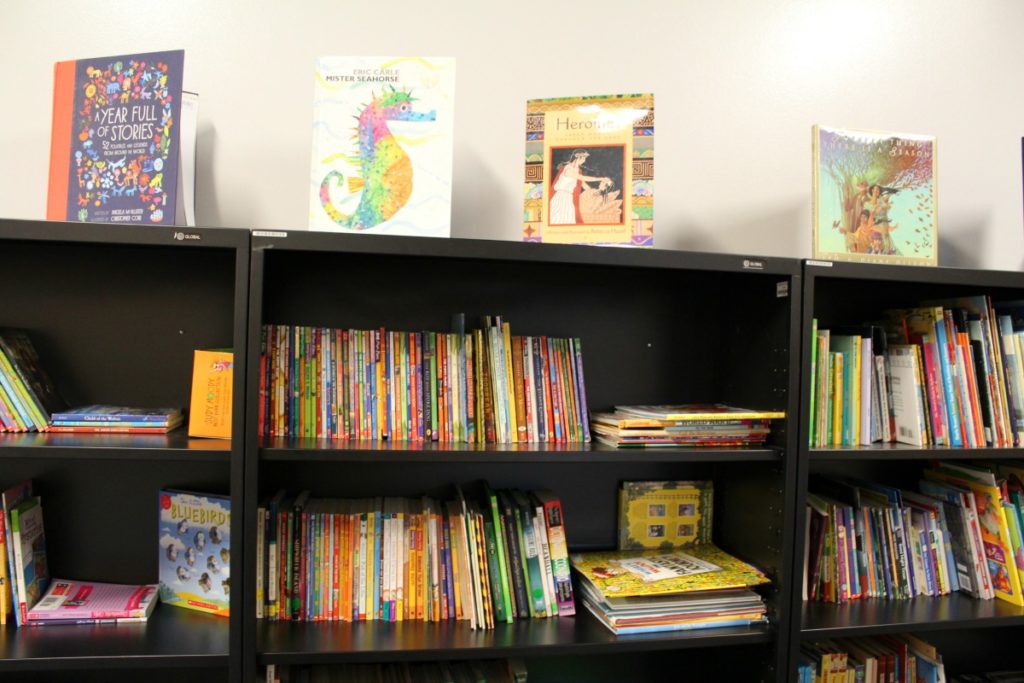
The students have a reading period for 20 minutes every day with a book from home or chosen from the shelves at school. The North Central campus does not have a formal library, but there is a stretch of hallway lined with bookshelves curated by parent volunteers.

During our tour, we got Hubalik sidetracked on a discussion of The Day the Crayons Came Home by Drew Daywalt and Oliver Jeffers. It’s great to see educators who are passionate about books.
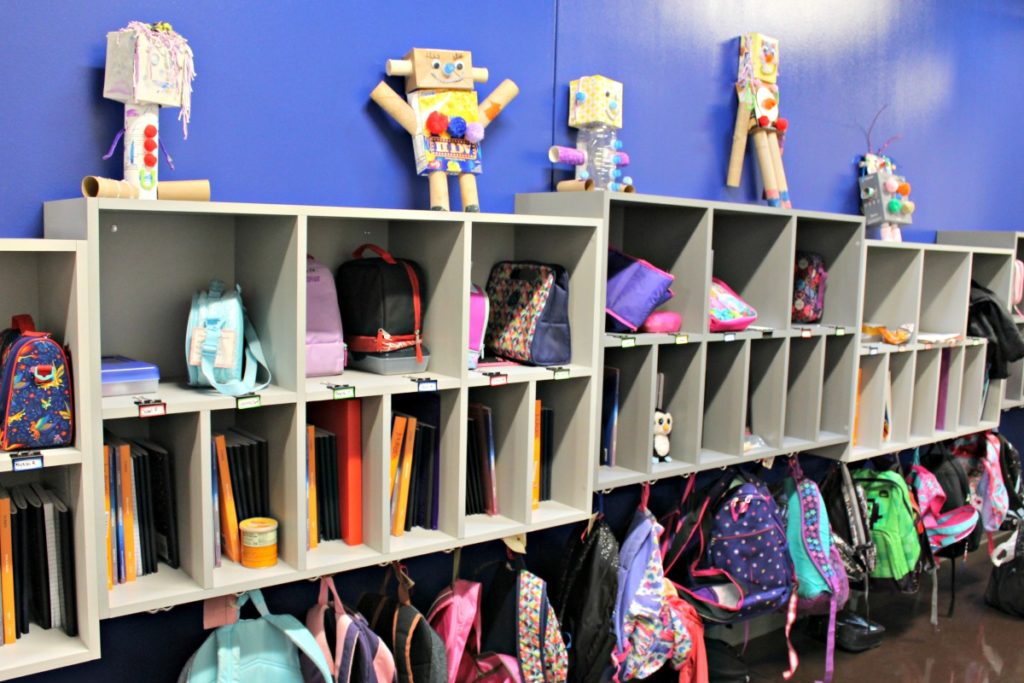
The system guides students to learn autonomy. Each student has his or her own cubby in the hallway, and they get in the habit of bringing the right books to class with them. Also, they write their daily assignments down in a CJ, short for “Communication Journal.” Students learn to take more responsibility and rise to the expectations set for them.
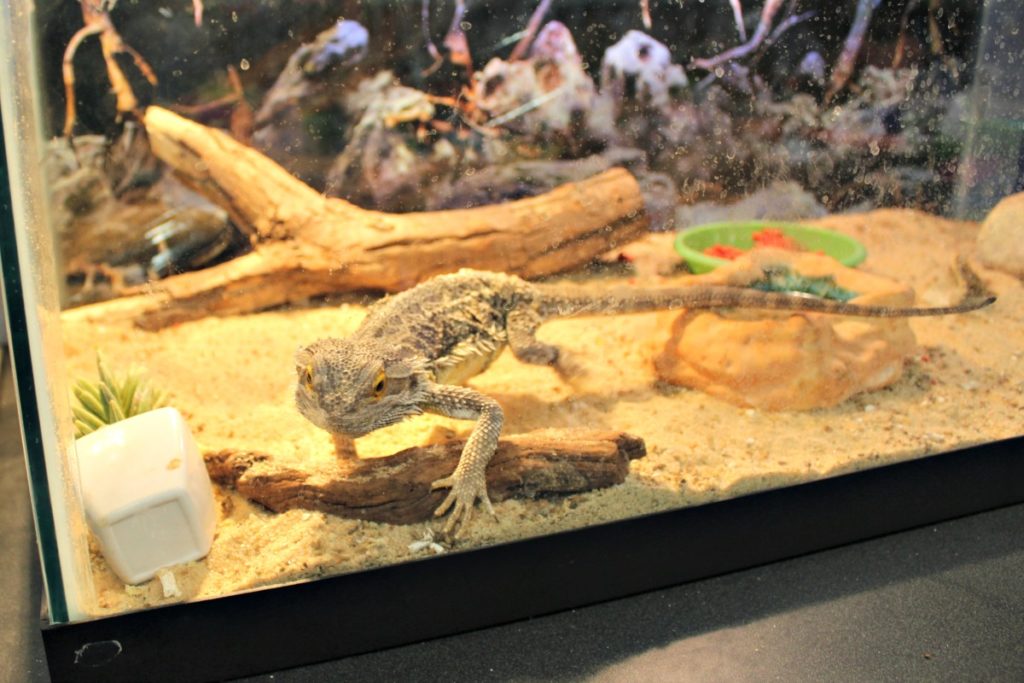
In kindergarten, the students stay in the same classroom for most of their lessons. Their cubbies are in the classroom. There is a bathroom nearby and kindergarten has its own playground. They also have several pets, including a lizard.
Fifth grade prepares students for the transition to middle school. There are more class periods in their school day. They make transitions without help from a teacher and have traditional lockers in the hallway.
A typical 5th grade math class, using Saxon, begins with students reviewing the previous day’s problem set and asking the teacher for help with the most challenging problems. Most likely, those are the problems that cover new material. A problem set in Saxon math will include a handful of problems on new material, but most problems will be a review. The teacher will present a new problem set and introduce the concepts in the new material. Students will work on whiteboards and show their work. Then, they will work individually to get a start on their homework—the rest of the problem set—which they will complete and bring to school the next day, and the process repeats. It’s a highly structured program, but it works.
Fifth grade students begin studying Latin, which has benefits for boosting their vocabulary and laying a foundation for learning related languages like Spanish and French. The 5th grade science course includes earth science in preparation for more specialized science courses in 6th–8th grades. Their specials classes include theater, PE, and martial arts.
Technology on campus is enabled by two laptop carts that are shared across the campus.
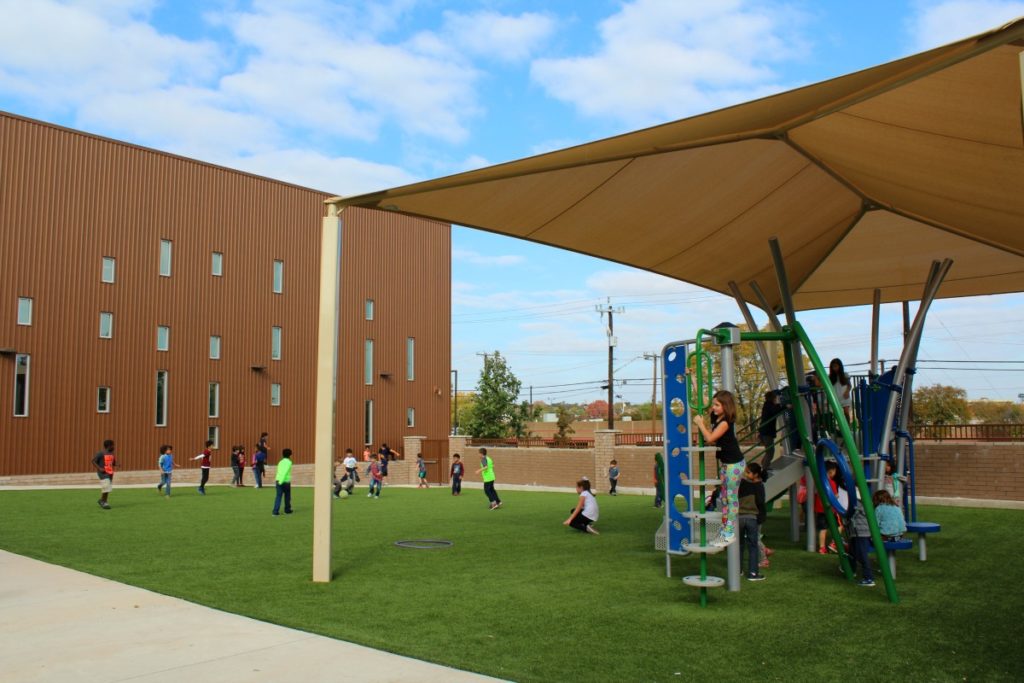
Physical activity is an essential part of the day. Younger students in grades K–3 have recess three times a day.
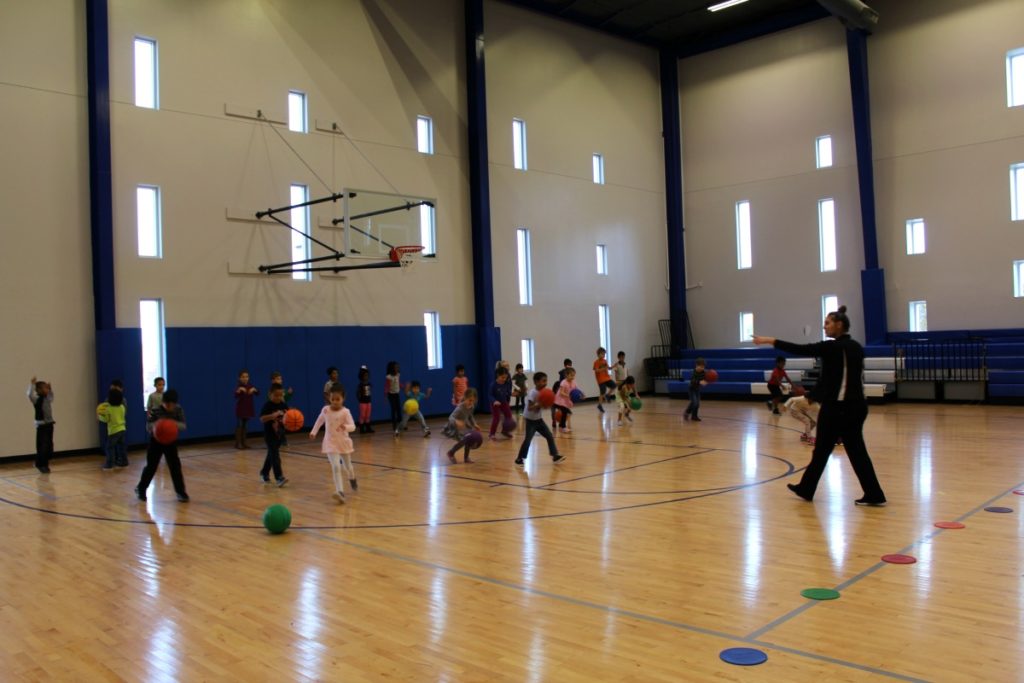
For all students, PE classes meets several times per week.

Students eat lunch in the multi-purpose room. The parent volunteer organization, the BASIS Boosters, organizes lunch service through restaurants and caterers. BASIS does not offer transportation to school. There is a dress code but no school uniforms. Before- and after-school care is available for a fee.
Being a BASIS parent is an adjustment if you are used to how things are done at traditional public schools. At BASIS, grading starts at kindergarten, and it can be a tough experience for a parent to receive detailed feedback about their child’s work. Expectations are higher at BASIS, and many students will experience low grades or failure on some assignments. Families who succeed at BASIS learn to support their children while they recover from those stumbles.
Open Enrollment for BASIS San Antonio
BASIS San Antonio schools are currently in their open enrollment period, which ends December 15, 2017. All applications received during open enrollment will be entered into a random lottery on January 10, 2018 and have an equal chance of getting an offer. Students who don’t get an offer right away will be added to a waiting list. Applications received after open enrollment will be added to the waiting list in the order in which they are received.
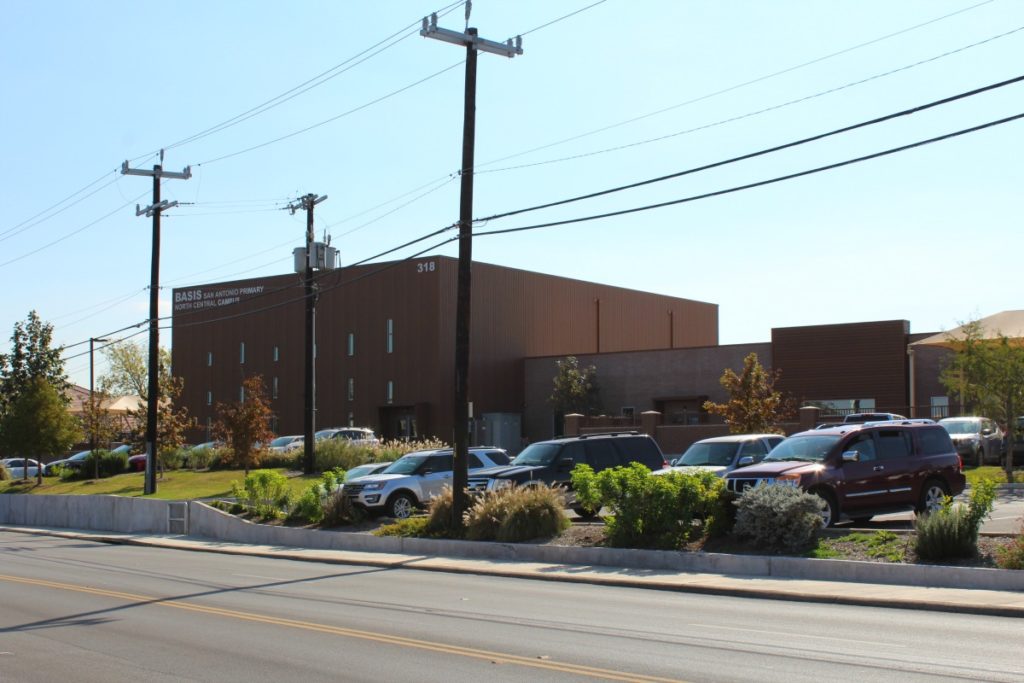
Families with students who will be in grades K–5 in 2018-19 may apply to the North Central and Medical Center campuses.
BASIS San Antonio Primary North Central Campus
- 318 E. Ramsey Rd., San Antonio, TX 78216 (map)
- Apply
- Interest list and school tours
- Enrollment FAQs
- Facebook page
BASIS San Antonio Primary Medical Center Campus
- 8519 Floyd Curl Dr., San Antonio, TX 78240 (map)
- Apply
- Interest list and school tours
- Enrollment FAQs
- Facebook page
Both BASIS San Antonio Primary campuses feed into BASIS Shavano, which serves grades 6–12 with a college preparatory curriculum that is heavy on AP courses. BASIS Shavano is also holding open enrollment through December 15, 2017. This year, the campus is operating at a temporary location in Castle Hills while building a permanent campus to open in August 2018.
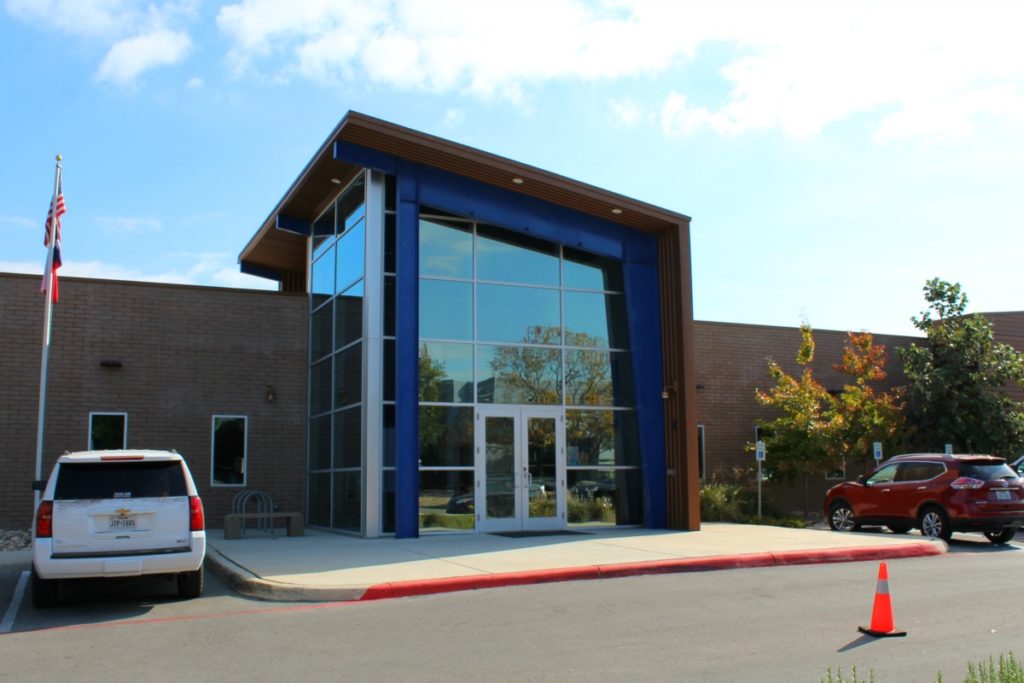
San Antonio families are fortunate to have BASIS San Antonio as a free education option. There is really no other school like it for offering rigorous, college preparatory education. As you learn more about BASIS, if you feel like your child might be a good fit there, I encourage you to apply during open enrollment so that your child has the best chance of getting an offer to enroll.
Read more
- “A Chat with a BASIS Charter School Parent”, Alamo City Moms Blog, November 9, 2017
- “Lists show San Antonio’s top elementary, middle, high schools by rank”, Mary Claire Patton, KSAT, September 11, 2017
- “IDEA and BASIS Chart a Rigorous Course to Top Rankings,” Bekah McNeel, Rivard Report, May 22, 2017
- “AP For All: IDEA Public Schools in San Antonio Gives All Students Access to Advanced Placement Courses,” Inga Cotton, San Antonio Charter Moms, September 18, 2017
